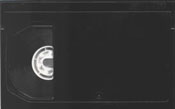Resource Guide Homepage
Resource Guide Homepage
Media Exhibition Formats & Playback Equipment
Preferred media formats and playback equipment for exhibiting single-channel video works are specific to the presentation environment and the artist's work. For example, VHS is only acceptable for classroom or reference viewing, a well-authored DVD is suitable for looped exhibition in a gallery space, and DVCAM is an excellent format for cinematic presentation. Hard drive playback is also a viable option for the presentation of single-channel video if rights are cleared for compression/digitization, and if the exhibition institution has the technical and financial resources to accommodate this exhibition mode (For a more detailed discussion of hard drive playback, visit Computer-based Arts Equipment & Technical Issues).
Explanations and recommendations regarding exhibition formats and playback equipment are given below. For a more comprehensive discussion of media formats please visit the Formats section of the Resource Guide.
DVD (Digital Video Disc) is among the preferred formats for exhibiting single-channel works in a gallery or museum environment. DVD, introduced in 1995, is an optical disc storage technology that shares the same overall dimensions of a CD but has a much greater storage capacity. It uses MPEG2 compression to encode 720:480p resolution and full-motion video, and Dolby Digital to encode 5.1 channels of discrete audio. This also makes DVD an option for the exhibition of works with up to 5.1 channels of surround-sound. DVD is not a failsafe medium; there are a number of important considerations to keep in mind. There is an enormous quality spectrum when it comes to DVD authoring. A poorly encoded DVD will result in image and sound fraught with digital artifacts, unwanted pauses, unpredictable interruptions, and distortions. It is critical to allow for ample time to test, and potentially replace, your exhibition copy prior to installation. Another important part of DVD authoring is the loop function. If the work is to be looped (repeated continuously throughout exhibition hours), the DVD should be programmed to accommodate this during authoring. There are many different manufacturers and types of DVD-R (recordable DVD) stock. The manufacturer and quality of your media stock will impact its compatibility with playback equipment and its overall reliability. Professional DVD players are designed to run continuously without failure. Most professional models have serial ports (RS-232) allowing computer control and synchronization of multiple DVD players and are also multi-standard, playing back both NTSC and PAL DVDs. DVD media is rapidly evolving. DVD-R Gold is a relatively new format which claims an archival life. These discs are considerably more expensive. In the near future HD-DVD and Blu-ray Disc will be available; these discs will have much greater storage capacity, and thus will accommodate video encoded at higher rates.
DVCAM (not to be confused with MiniDV, which most consumer camcorders use) is the preferred format for a cinematic or theatrical screening. Although it is of superior technical quality to DVD, DVCAM cannot be shown as an endless loop, and is thus less desirable for unattended gallery and museum exhibitions. Developed by Sony as part of the DV format and introduced in 1996, DVCAM transports tape 50 percent faster than DV (digital video) and MiniDV, resulting in a higher track width, which can store more information and result in a higher quality image. The codec used is the same as DV, but because of the greater track width available, the data is much more robust, resulting in 50% less dropout. DVCAM is a professional/industry-level product, and playback decks are designed for high quality playback, with many output options accommodating numerous cable configurations. If an artist?s master exists on DVCAM, a collector may be provided with a sub-master on DVCAM for archival purposes. This sub-master should not be used for general exhibition playback. An exhibition copy on a more suitable format should be provided.
Betacam SP (commonly called Beta SP) was introduced by Sony in 1986, and remains an excellent format for cinematic screenings or theatrical environments. Betacam SP (for "Superior Performance") increased horizontal resolution to 340 lines over the early Betacam's 300 lines. Beta SP was the industry standard for most TV stations and high-end production houses until the late 1990s. Typically only larger institutions can accommodate presentations on Beta SP due to the relatively high cost of the playback equipment. Betacam SP is also a professional/industry level product. It is an uncompressed analog format that is very durable, reliable, and, through migration, able to maintain a maximum level of information compared to other analog tape stocks. However, inherent to being an analog stock, there can be generation loss on subsequent tapes made from this master. Beta SP was the industry standard for most TV stations and high-end production houses until the late 1990s.
VHS (Video Home System), which was introduced by JVC in 1976, is recommended as a reference or classroom viewing format and is not acceptable for public exhibition. A VHS cassette contains a 1/2-inch-wide magnetic tape wound between two spools, allowing it to be slowly passed over the various playback and recording heads of the video cassette recorder. The quality of a VHS tape degrades significantly after repeated playing, and when projected results in a substantially compromised image. As VHS was the consumer standard during the 1980s and 90s, a wide range of decks are still in circulation. Only professional models should be considered for playback; lesser decks are much more prone to "eating" tapes.



